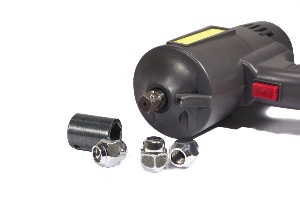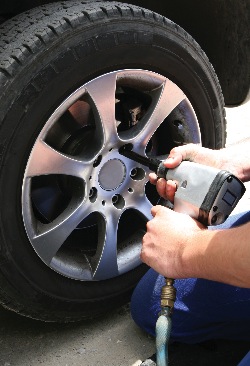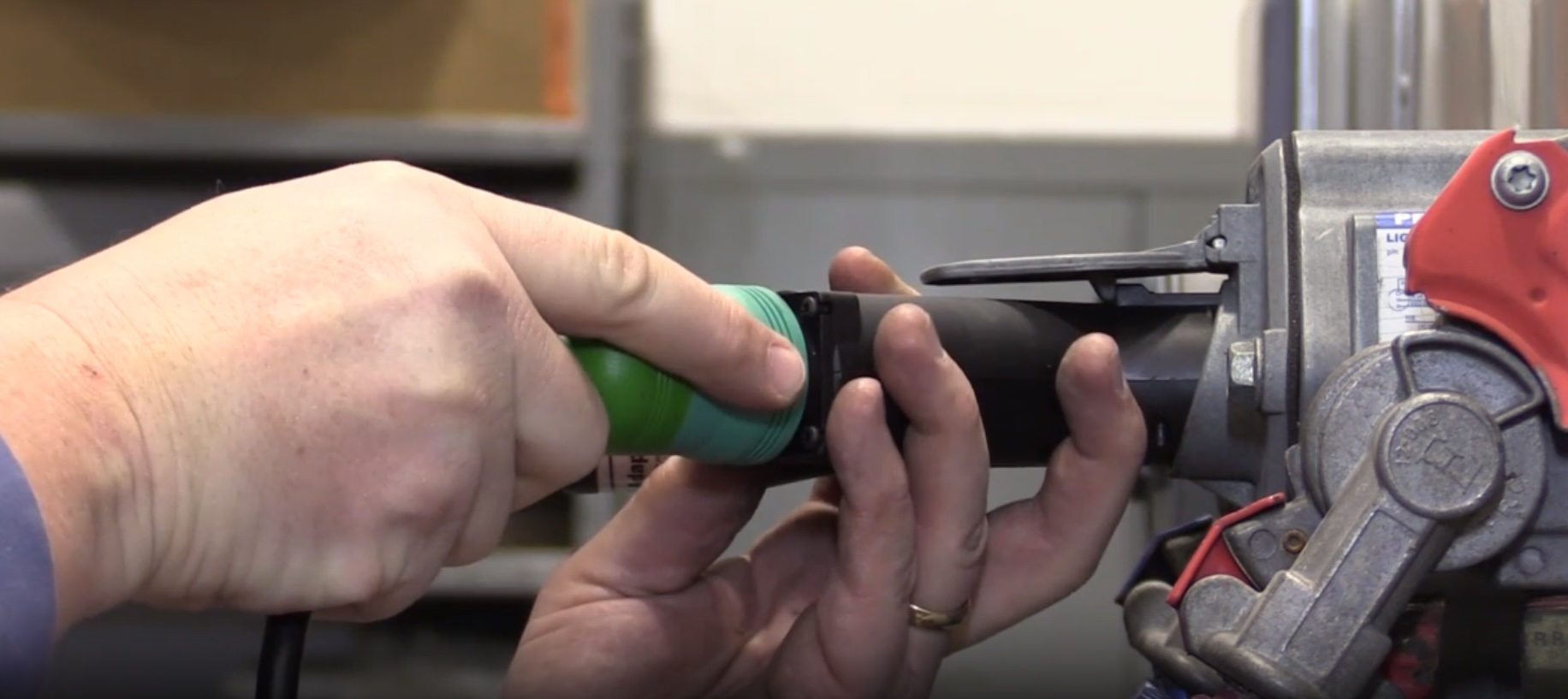Power, control, durability and lightweight. These are features technicians demand in their pneumatic tools. Life as a technician would be a whole lot more difficult without the power tools that have become such a large part of day-to-day life in the shop.

When you’re looking for a new pneumatic tool, the trick is deciding how to pick the right tool for the job. There are many reasons to choose certain kinds of tools, all are dependent on the type of work you need the tool to help you do.
For example, a 3/4” impact may have the best torque and rotating speed specs, but if you had to use it as your primary impact for light- to medium-duty vehicle service, you would be handicapping your productivity due to the size of the tool.
So, how do you decide the best tool for the application? Think about the job to be done. Obviously some jobs use a much larger amount of energy than others, for different lengths of time. Consider whether the tool is a low- or high-energy user, and how long you will operate the tool for any given job.
First, what kind of work will you be doing? How long do you need to be able to do the job? And how much can you spend on the tool? Keep in mind, you usually get what you pay for. But, no matter the price of the tool, it won’t last long if you don’t maintain it properly and ensure the air supply is filtered to remove water and other contaminates.
Ergonomics
If the task at hand is one that requires some time behind the tool, make sure the tool feels good in your hand, and is lightweight enough to be comfortable when in use for long periods. Pneumatic tool manufacturers have different “ergonomic philosophies” when it comes to their balance, grip design and trigger mechanisms. Make sure to find the tool or manufacturer that fits you. Most tool trucks will let you try out an impact before you buy it.

Many of the major manufacturers now incorporate ultra-lightweight metals, such as titanium, and ballistic-strength nylon-impregnated plastics in their tool bodies and mechanisms. The goal is weight reduction. So, remember, just because a new tool is lighter than you may be used to, doesn’t mean that it’s lightweight in the power department.
You want a well-balanced tool that provides an excellent power-to-weight ratio and greater ease of use. In addition to reducing operator fatigue, better weight distribution makes working in confined spaces much less awkward.
Some tools offer a rubberized grip for more comfort and control. Manufacturers are also going out of their way to make sure these surfaces can stand up to the repair shop environment. Look for surfaces that are resistant to solvents and other chemicals.
With more tools becoming lighter and more ergonomic, manufacturers are rethinking how the tools are controlled. For impacts and ratchets, more manufacturers are trying to perfect the one-handed directional change. The objective of these designs is to keep as much of your palm and thumb in contact with the tool while you change direction or activate the trigger.
Torque & Pressure
Some tools are being promoted with increased torque ratings. Some manufacturers are using terms like “ultimate torque” and “tightened to torque.” It can get confusing when trying to make comparisons, but most manufacturers are honest when it comes to the “working torque” specification.
Calculate the difference among the tools your considering. If it’s only a 7-10% difference, it’s not going to determine your productivity or languish in your toolbox. Our advice is to look past the torque numbers, and go with what works and feels the best for you.
Keep in mind the amount of torque you get from any impact wrench will be affected by many things including: air compressor capacity, length of hose, number of tools working off the compressor at any time, etc.
Look for an impact mechanism that performs well with a variety of air pressures and supply conditions, eliminating the required cost of upgrading to a larger air line.
Most air tools like to run at a pressure of 90 psi at the tool. Most impacts and ratchets run optimally at 100 psi, any more pressure will not improve performance. With some tools, the performance of the tool drops with pressures greater than 120 psi.
The question for you to consider is will the compressor in your shop be able to sustain 90 psi for the length of time needed to operate the tool you wish to use and to complete the job you need to do? In order to be able to answer this second question, you need to know about the volume requirement of the tool and the volume of the compressor in your shop. High-energy users are really high-volume tools. Rotary tools tend to use the most energy, followed by oscillating tools and then fastening tools, which are usually the lowest consumers of air volume.
Decisions, Decisions
Ask your tool distributor a lot of questions before you make a decision. iATN is also a great resource, as are online tool reviews.
TechShop’s Top 5 Tools section allows readers to recommend their favorite tools. Archives of the section can be found on our website, www.TechShopMag.com. If you especially like a tool (or five!) send in your favorites and the reasons you like them. This section helps other technicians know what really works and helps you do your job more efficiently.
For power tool safety and educational information, visit the Power Tool Institute’s site at www.powertoolinstitute.com.
For a list of Pneumatic Tool manufacturers, go to www.TechShopMag.com.
Also see the list below:
AirCat’s Wrench Provides 1,000 ft.-lbs. of Loosening Torque
Chicago Pneumatic Introduces CP7749 – 1/2-inch Impact Wrench with Revolutionary Design
Dynabrade’s Unique "View Port" Offers Optimum View of Work Surface
Florida Pneumatic’s High Performance Impact Wrench
Ingersoll Rand Launches 259 3/4" Impactool
Matco Tools Introduces the MT2814 1/4" Composite Ratchet
Kaeser Offers Easy-to-Install Compressed Air Systems
Reelcraft Introduces a New Air Vend Reel
Quincy Compressor Introduces the Quincy QGD

